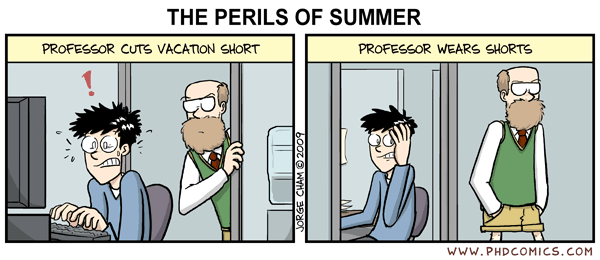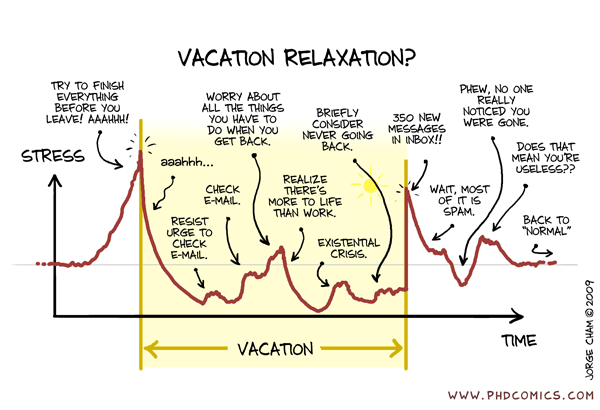
Academia
A Fair(y) Use Tale?
Jill/TxT linked to Eric Faden’s A Fair(y) Use Tale? which uses clips from a couple of dozen Disney movies to explain copyright and fair use. Taken together with the teaching resources at TeachingCopyright.org it provides an excellent resource on discussions of fair use and the public domain (naturally from a US perspective).
Ghost writing in Science, plagiarism with a twist
Read yesterday in the Guardian that a MD was being accused of plagiarism with an interesting twist. Basically he had been accepting cash to add his name to medical articles written by a drug company.
Doctors have been agreeing to be named as authors on studies written by employees of the pharmaceutical industry, giving greater credibility to medical research, according to new evidence.
The Guardian has learned that one of Britain’s leading bone specialists is facing disciplinary action over accusations that he was involved in “ghost writing”.
When talking to students about plagiarism I tend to say that plagiarism is any attempt by a student to use the ideas or words of others in an attempt to deceive the examiner into believing they are students own. But is what the MD is doing plagiarism? And how does this differ from the more accepted forms of collaboration? For example lazy co-authors or large teams working together. How much does the “author” of a paper actually need to write him/herself for it not to be plagiarism? Some papers are co-authored by hundreds of researchers who have worked together to varying degrees. ScienceWatch reports on multi author papers and give examples of papers with up to 900 collaborators!
The question is naturally important but what is the difference between 900 collaborators or a paper ghost written by the company to which the MD agrees?
An experiment in integrity
I am looking to attempt an experiment during the course I am teaching right now. The idea is to give the course participants the opportunity to examine how much personal information is available online.
To do this, participants are divided into groups. Each group is then given the name of a person and then digs up any and all information they can about that person.
The teams will have to account for:
- The information they find
- How & where they found the information
- Make assessment of the details of credibility.
One of the major “problems” in conducting this experiment is the selection of the person to be examined. Choosing a public figure could be an option but it is difficult to assess the credibility of information acquired. Therefore what remains is to put oneself on the line and the students study their lecturer. Which leads to a question I must ask myself – Do I have something I do not want to find out about myself…
I would really appreciate comments on this idea….
Science books: The best of the best
Tim Radford reviews the short listed books for this years prestigious Royal Society Science Book Prize. Read the reviews and then go read the books. We are living in a time when science books are fun reading – are we at the height of science reporting? So sure the criticism that science becomes devalued into entertainment but that’s a hell of lot better than being ignored.
What the Nose Knows: The Science of Scent in Everyday Life by Avery Gilbert (Crown $23.95)

Bad Science by Ben Goldacre (Harper Perennial £8.99)
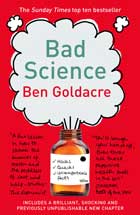
The Age of Wonder: How the Romantic Generation Discovered the Beauty and Terror of Science by Richard Holmes (Harper Press £25)

Decoding the Heavens: Solving the Mystery of the World’s First Computer by Jo Marchant (Windmill Books £8.99)
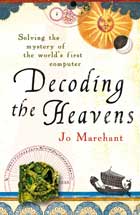
The Drunkard’s Walk: How Randomness Rules Our Lives by Leonard Mlodinow (Penguin £9.99)
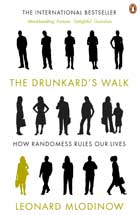
Your Inner Fish: The Amazing Discovery of Our 375-million-year-old Ancestor by Neil Shubin (Penguin £9.99)

The three hurdles in the path of free culture
Social advances (albeit unequally distributed) have granted people the leisure time to focus on the production of non-essential products and services. Advances in technology have radically reduced the costs for preserving and communicating these cultural artifacts beyond the boundaries of time and space. However it was not until the last 150 years where we have seen the technical and social advances necessary to enable widespread dispersion of the tools of cultural creation and communication to a wider group of users – the amateurs.
The oldest of these technologies is the art of reading and writing which challenged the status of memory. Plato was aware of the conflict and wrote about the art of writing in Phaedrus:
“…for this discovery of yours [writing] will create forgetfulness in the learners’ souls, because they will not use their memories; they will trust to the external written characters and not remember of themselves. The specific which you have discovered is an aid not to memory, but to reminiscence, and you give your disciples not truth, but only the semblance of truth; they will be hearers of many things and will have learned nothing; they will appear to be omniscient and will generally know nothing; they will be tiresome company, having the show of wisdom without the reality.”
This criticism tends to repeat itself with each new technology that redresses the shift of power among those who create culture and those who create culture with the aid of new technology. Arguments similar to those presented by Plato were used in the discussions of the relationships between photography and copyright. Mediating culture with technology brings about discussions on which of the forms of culture are more valuable and deserve protection.
In USA, after Congress amended the Copyright Act to include photography in 1865 the case of Burrow-Giles Lithographic Co. v. Sarony discussed whether the photographer Sarony could have sole rights to his portrait of Oscar Wilde. The United States Supreme Court ruled that photographs could be “representatives of original intellectual conceptions of an author.” While in the UK the courts stated in the Graves’ Case (1869) LR 4 QB 715 (a case under the Fine Arts Copyright Act 1862 dealing with a photograph of an engraving) that it was “…difficult to say what can be meant by an original photograph. All photographs are copies of some object.”
From these illustrations it is my intention to show that the discussions of culture, technology, value and protection are under constant discussion and movement and therefore are neither fixed nor moving in a linear development from one stage to the next. With the widespread dissemination of a cheap and simple (both terms to be take relatively) technology of digitalization coupled with an open communications infrastructure further barriers to amateur production of culture were removed.
This leads us up until today when the hurdles facing the individual wishing to become a cultural producer are no longer issues of time, economy or technical know-how. What are left are the two major barriers of creativity and copyright. Since it is beyond my ability to discuss the creativity of others I shall limit myself to developing what is meant by the limiting factor of copyright on the creativity of individuals by presenting the three main copyright related hurdles to free culture. The three hurdles are FUD, DRM & copyfraud. The common factor for these three hurdles is that they prevent the free use of cultural material in the development of new cultural artifacts and since our common cultural heritage provides the “raw material” in cultural production the means to develop new material is seriously curtailed.
Fear Uncertainty & Doubt (FUD)
The complexities of copyright have created a great deal of uncertainty among those actors attempting to create cultural artifacts while remaining within the limits of the law. The results of FUD favor inactivity since the perceived risks of violating copyright are seen as too great to risk. FUD is an important factor in different situations, for example: (1) where the creator intends to expose his/her product in a more formal setting e.g. a young film maker may easily add music or images to his/her film without permission but this will limit his/her ability to display the works to the public. (2) Orphaned works i.e. when the author of a work has been “lost” it becomes impossible to ask permission to reproduce and valuable cultural information is lost to the world. (3) The ability of museum and archives to reproduce or present their material to the world. At present the conflict between the National Gallery and Wikipedia provides an excellent illustration of this point. The latter is a great source of concern to many public cultural heritage institutions.
Digital Restrictions Management (DRM)
In an attempt to ensure control over intellectual property many organizations and individuals are implementing digital protection measures. The goal of these measures is to ensure that the copying and spreading of copyrightable material is prevented. However these digital measures tend to create rights for the owners that often go beyond the fair use rights of those attempting to consume the cultural artifacts. In addition to this, legislation intended to prevent users from circumventing digital protection measures have been enacted in most jurisdictions. The effect of such legislation is to make moot whether or not the user has fair use rights under copyright since he/she is illegally circumventing a digital protection measure.
Copyfraud
The general state of confusion surrounding the extent of protection granted by copyright is being used (intentionally and unintentionally) to claim copyright over material which either may not be copyrightable or material for which the period of copyright protection has passed. These illegitimate limitations to the public domain may of course be contested in court but such actions are costly, entail an element of risk and favor the party with better lawyers. Therefore material, which under copyright legislation is available to all, is prevented from becoming part of our common cultural raw material that may be freely used.
Fresh First Monday out now!
The latest issue of First Monday is online. As always this journal manages to provide articles of interest every month. No exception this time. I am looking forward to reading The relationship between public libraries and Google: Too much information by Vivienne Waller, What value do users derive from social networking applications? by Larry Neale and Rebekah Russell-Bennett & From PDF to MP3: Motivations for creating derivative works by John Hilton.
Strangely enough even though First Monday has been around since 1996 – it was one of the first openly accessible, peer–reviewed journals on the Internet – and it has a focus on the Internet some students have managed to miss it and its impact.
Another pro-copyright proposal
Protecting old media, old school… an idea from the Becker Posner Blog:
Expanding copyright law to bar online access to copyrighted materials without the copyright holder’s consent, or to bar linking to or paraphrasing copyrighted materials without the copyright holder’s consent, might be necessary to keep free riding on content financed by online newspapers from so impairing the incentive to create costly news-gathering operations that news services like Reuters and the Associated Press would become the only professional, nongovernmental sources of news and opinion.
Posner is an extremely influential American jurist with a intimidating pile of publications to his name. But that does not mean he is always right… Using copyright to create protectionism is the opposite of creating and sustaining free markets.
Gikii 4 programme
Registration is now closed, but here is the programme for this year’s Gikii. The good news is that I am in the first session.
17 September
09:15-09:30 Opening
09:30-10:45 First morning session (3): Doomsday
- Christopher Lever, Fortun@e 500: A Consideration of the Contract Law Consequences of Cache Poisoning
- Clive Feather, Resilience of the PGP “web of trust” and the disruption of criminal networks (no abstract)
- Mathias Klang, Strangelove and Salami: An illustration of the unintended consequences of technical solutions
10:45-11:15 Coffee Break
11:15-12:30 Second Morning session (3): Digital Identities and Legal Life After Death
- Burkhard Schafer, ZombAIs and family law: technology beyond the grave
- Lillian Edwards, Death 2.0
- Wiebke Abel, Shawn H.E. Harmon, Future Tech: Governance & Ethics In The Age Of Artificially Enhanced Man (Or ‘Beware The Zombais At The Gate’)
12:30-13:30 Lunch (on location)
13:30-15:15 First Afternoon session (4): Robots and Interfaces with Humans
- F.E. Guerra-Pujol, Blade Runner, Time Scarcity and the Optimal Lifespan of Robots and Clones’
- Miranda Mowbray and Burkhard Schafer, EAT ME
- Dr Richard Jones, ‘CyberTags: The third generation of electronic offender-monitoring systems’
15:15-15:45 Coffee Break
15:45-17:30 Second Afternoon session (4): Copyright: Take A Bite!
- Bernt Hugenholz, ‘A Future of Levies: The Taxification of Copyright’
- Ot van Daalen & Iris Kieft, Towards new methods for resolving the conflict between copyright and the free flow of information
- Nicolas Jondet, France: the land of the Linux? The case of DRM interoperability and reverse-engineering
19:30 Sponsored conference diner.
18 September
09:15 Opening
09:15-10:30 First morning session (3): New Media Harms
- Andrea Matwyshyn, Intended Data Beneficiaries
- Arno R. Lodder, Is it possible to control personal information that was uploaded by others without the intention to harm or infringe?
- Caroline Wilson, Twit or Tweet? Legal Issues Associated with Twitter and other Micro-Blogging Sites”
10:30-11:00 Coffee Break
11:00-12:30 Second Morning session (4): Making and Sharing
- Maarten Brinkerink, Inge van Beekum, Incentives and Constraints for Dutch Public Broadcasters to Adopt Creative Commons Licensing
- Melanie Dulong de Rosnay, Creative Commons licenses incompatibilities : when sharing needs to be rationalized
- Steven Hetcher, Location, Location Still Matters: Pop Stars, User-Generated Popular Culture & The Dislocation Of Non-Location
- Ray Corrigan, Protecting the public domain: a five point plan’
12:30-13:30 Lunch (on location)
13:30-15:15 First Afternoon session (4): The World Explained
- Andrés Guadamuz, Luddism 2.0, or How I Learned to Stop Worrying and Love the Web
- Peter K. Yu, The Crossover Point
- Chris Marsden, Net Neutrality as a Debate About More Than Economics
15:15-15:45 Coffee Break
15:45-17:30 Second Afternoon session (4): Fundamental rights
- Joris van Hoboken, Search Engine Censorship: New Metaphors for the Suppression of Findability
- Judith Rauhofer, “Get out of my head, bloodsucker!” Notions of surveillance in the vampire mind
- Martin Jones, Sousveillance: The Emergent Digital Eye Witness
- TJ McIntyre, Won’t somebody please think of the children!?
Summer is over
